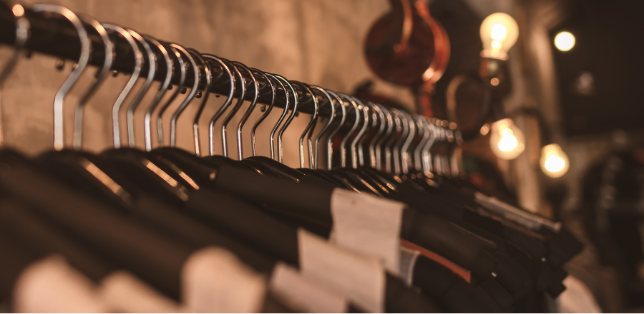The impact of the COVID pandemic has been felt keenly in the fashion and retail sector. Many brands have suffered from the numerous lockdowns and reduction in foot traffic through retail stores. The brands that have managed to survive, or even to thrive, include those with a strong online presence. In recent months, there has been a noticeable rise in consumers’ engagement with online, fast fashion brands such as SHEIN, ASOS and Taobao. This is no doubt partially due to consumers’ caution in returning to in-store shopping, particularly in light of the ease of home delivery.
The popular fast fashion online brands have a vast selection of items that is constantly updated to provide consumers with a constant flow of new products. Consumers of fast fashion can purchase large orders at a relatively low cost, some even choosing to review goods on social media. Given the huge catalogue of products, it is possible for users to keep repeating this content whilst gaining some thousands of followers.
Fast fashion brand SHEIN has a model that, in their view, is sustainable. They create a small amount of a new item to test the waters and, if it does well, they then produce more. The argument here is that there is less going to waste and less product in storage. Nonetheless, the challenges of sustainability and environmental awareness remain for fashion brands, particularly those that have business models that focus on volume.
The fashion industry has a huge impact on climate change and accounts for up to 10% of global carbon emissions. Over the lifespan of a single item of clothing; from growing or making the raw materials, processing, transportation, packaging and retailing through to the disposal, the impact on the planet is significant.
There has been significant focus in the media, and for consumers, on the sustainability of the fashion industry and the issues and environmental effects of fast fashion. Following the COP26 summit in Glasgow earlier in the year, there is a spotlight on environmental issues in the fashion sector. Brands are becoming more aware of sustainability and the need to highlight their green efforts.
Whilst the road to sustainability is long, the significant challenges present an opportunity for innovation. The deforestation of the Amazon for the production of leather that is used by brands around the world has made recent headlines. In the past, leather alternatives have typically been made of plastic, which might be an improvement from an animal welfare perspective, but still has a detrimental effect on the planet. However, new leather alternatives made from mushrooms hit the high-end brands market. The new mushroom based products are both vegan and sustainable and provide an alternative for concerned shoppers.
However, it is notable that for consumers there appears to be a strong split between green, sustainable brands (that tend to be more expensive) and lower budget, fast fashion brands that are accessible and quick. Not all shoppers are able to buy a handbag made from patented mushroom leather at the current price point.
As the available alternatives become more commonplace, it is hoped that they will become more affordable and readily available to all consumers.
These new technologies present a new opportunity for brands to protect their products and technologies and materials while also protecting their brand in the minds of their consumers.
Marks & Clerk has a specialist group within its trade mark team who specialise in advising the fashion and retail sectors. If you have any questions, please get in touch.



